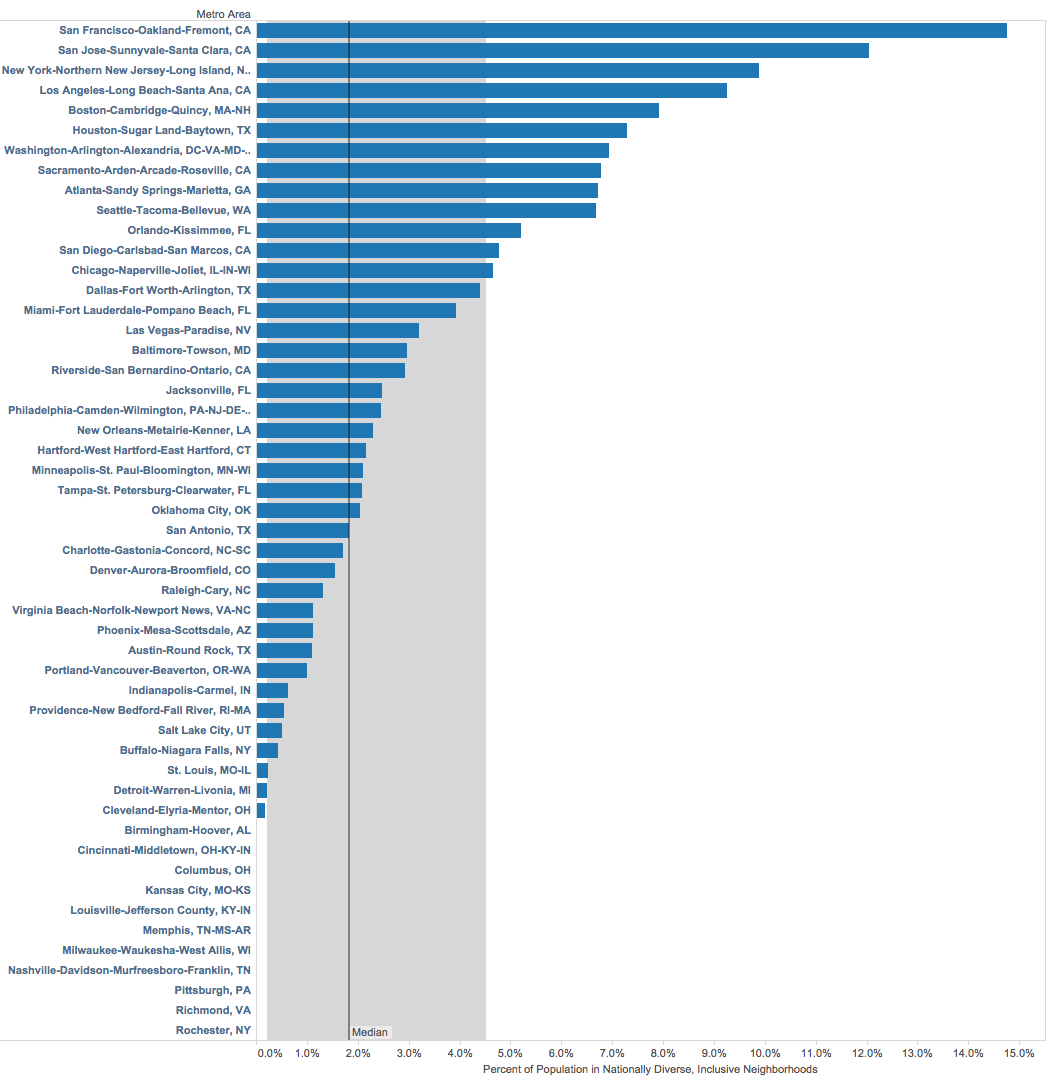]Which U.S. metro areas have the most people living in inclusive and diverse neighbourhoods?
About seven million Americans live in communities with high levels of racial/ethnic and economic diversity, according to a 2018 study by the City Observatory.
In their paper, America’s Most Diverse, Mixed-Income Neighborhoods, City Observatory computed two metrics to find out where these communities are located exactly.
The first metric is the Racial and Ethnic Diversity Index (REDI), which measures the probability of two randomly selected individuals from a neighbourhood having different races or ethnicities.
The second metric is the Income Diversity Index (IDI), which follows the same approach used for the REDI, but instead, the income is used as the attribute of comparison.
Countries which have gained REDI and IDI scores both belonging to the top 20% of all the urban neighbourhoods considered in the study are classified as diverse mixed-income neighbourhoods. Here are some of the study’s key results.
Highlights

The highest share of the population residing in diverse mixed-income neighbourhoods can be found in the San Francisco metropolitan area in California at roughly 14 percent. It is followed by the San Jose metropolitan area also in California (11.3%), and New York metropolitan area (9.7%).
About half of all the diverse mixed-income neighbourhoods are concentrated in three states: New York, Los Angeles, and San Francisco. However, it is California which recorded the highest shares of populations living in these diverse and inclusive areas.
The importance of integration
Embracing diversity is among the calls of George Floyd and Black Lives Matter protests. No one should ever experience discrimination or oppression because of their race or ethnicity. The acceptance and the nurturing of diversity in the U.S. communities is vital in upholding basic human rights and ending the abuses towards black people.
Apart from upholding human rights, a healthy integration also has economic incentives. A study from the National Bureau of Economic Research suggests that economic and racial diversity can boost intergenerational economic mobility — the probability that a child from a low-income family will earn higher than their parents.
City Observatory also said that diverse neighbourhoods also provide better access to public resources and civic assets to everyone. Moreover, it can also aid in developing vast social networks.
The children of today and the future deserve a world where they can achieve their dreams without the color of their skin being a barrier. To make this possible, there are undoubtedly a lot of changes in the current state of affairs which we must fight for. However, the development of diverse, mixed-income neighbourhoods is among the many platforms we can start working on today.
If you want to explore where the diverse mixed-income neighbourhoods are located in the U.S., the City Observatory made detailed maps of the 52 largest U.S. metropolitan areas which you can check out. To know more about the results of the study, you can also read the City Observatory’s technical report.










